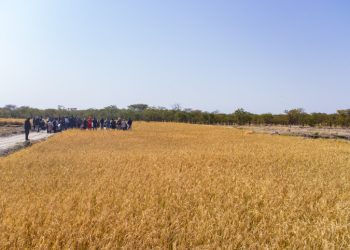
The Ministry of Agriculture, Water and Land Reform’s latest investigation into livestock deaths in the Zambezi Region shows that 585 cattle died by the end of 2023.
The Ministry says it has to date spent N$2.8 million towards procurement of medicine and vaccines in response to mass cattle deaths.
The Ministry’s head of Veterinary Services, Albertina Shilongo, said most of the cattle that died were old, pregnant, lactating, and young ones.
They died from 23 homesteads or 12 crush-pen areas namely Mbalasinte, Ihaha, Isize, Ikaba, Limai, Musekese, Silubaba, Nan’ombe, Ivilivinzi, Kalimbeza, Mpola and Liselo.
The investigation was carried out in the Kabbe South Constituency where several deaths occurred between June and November.
“The investigating team also observed that over 80% of cattle in visited areas were in poor body condition at the time of investigation and most visited areas were still with poor grazing pastures,” she said.
“According to farmers and cattle herders, the common clinical signs observed in most cattle before they died were recumbency (failing to stand) and emaciation (very poor body condition). Most cattle deaths occurred during the months when grazing was very poor and in cattle with poor body conditions thus concluding that most animals died due to drought.”
Shilongo said when the team conducted a post-mortem examination of some cattle that died during the week of the investigation, lesions of liver fluke and heart water were found to be among the common diseases responsible for cattle deaths in the region.
Other cattle deaths were associated with diseases such as pasteurellosis, black quarter, and worm infestation, Shilongo said.
“It was further observed that about 80% of the affected farmers do not vaccinate nor de-worm their livestock against common diseases and worm infestation. In addition, 75% of affected farmers do not give any much-needed feed supplements to their cattle which are essential during dry periods,” she said
Furthermore, the Chief Veterinarian said disease investigation activities by Directorate of Veterinary Services officials are still ongoing including testing for exotic diseases such as Theileriosis, thus urging farmers to cooperate by reporting any disease suspicion to DVS officials.
“In response to the mass deaths of cattle in Zambezi region, the Ministry’s decision was to offer free service and procure different drugs and remedies to assist farmers at a cost of N$2,801,975,†she said.
“The procurement included vaccines against Anthrax, Botulism and Black-quarter, multiminerals, vitamins, de-wormers (for worm infestation) and some antibiotics as per the below list: 1,000 bottles of Kyron Ivermax 1% inject 500ml, 200 bottles of Multimin SE+CR+CR 500ml, 100 Automatic roux syringes 30ml, 2,000 bottles of Flukazole C 250ml, 2,000 bottles of Supavax 100ml, 198 bottles of Flukazole 1L, 200 bottles of Agramycin 23% LA 500ml.”
To date, Shilongo said veterinary officials in the Zambezi region vaccinated 89,152 cattle against Anthrax, Botulism and Black- a quarter out of the 90,000, which is 99% of the targeted population in the eastern part of the region.
“De-wormers and multimineral have been reserved for use at a later stage and are to be given together with Pasteurella vaccine that is yet to be purchased,” she stated.
“It is therefore recommended that farmers should practice annual vaccination of their cattle against common diseases, including frequent de-worming of their livestock and regular tick control. They should also provide feed supplements for the weaker animals during drought”
Farmers were further advised to participate and benefit from the established Government drought relief programs and report any deaths of livestock to DVS officials without delay.
Further mitigating measures conducted by the Ministry was offering training from August to December, to farmers in areas of Luhonono, Ikaba, Ibbu, Impalila, Nsundwa, Kasheshe, Masokotwane, Lizauli, Chimchimane, Sachona, Lubuta, and Sangwali; to create awareness and empower farmers on how to properly institute herd health programmes.











